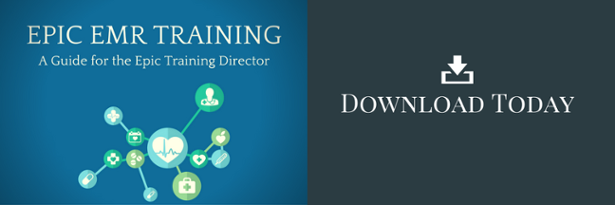Epic EMR Training: An Interview with Jennifer Williams


What are the characteristics of an Epic trainer and their projects? In this blog post, we interview Jennifer about how she became an Epic trainer, her typical projects, and best practices.
Jennifer Williams has been an Epic trainer since October 2012. She specializes in scheduling and registration.
How did you become interested in Epic EMR training and consulting?
My background is in adult education. When I transferred to the Atlanta area from Louisville, Ky. in 2011, I couldn’t find any training position so I got into human resources for a year or so. Then I found an opportunity at a local hospital for a credentialed trainer. I didn’t know what it was, but I researched it and it looked like a good fit. I applied and I got a call two days later from the healthcare company that owned the hospital. They hired me as a full-time employee and I started to train people to use Epic. I started consulting about a year and a half later.
What keeps you doing it?
I have a love for training. It’s my passion. Epic combines that passion with an awesome product and I get to travel and work with great teams. It’s a perfect trifecta of doing what I love, traveling the world doing it and working with a great product.
Tell us about a typical Epic EMR training project.
Every healthcare company uses Epic a little differently. When I go into a company, I want to observe how they’re using the software.
We will then spend five to six weeks in a credentialing period, learning the application and how the organization is using the application. Even if you have already been credentialed as an Epic EMR trainer you have have to re-credential at every healthcare organization where you go to do training. It’s more so learning how the healthcare organization is going to use that application because there’s going to be policies that govern the security they give to their particular end users. For example, some end users at an organization can schedule certain types of appointments while others need approval from a supervisor.
At the end of the six weeks, your trainers go before a panel that includes an Epic representative and they determine whether you pass and can train the organization’s end users.
You will then do two weeks of training with super users. These will be the subject-matter experts that people will go to at go-live. We use their feedback on the application to train the end users for six to eight weeks before go-live.
Typically, trainers, like me, will also do at-the-elbow support for go-live. So, I’m usually on site for six months to a year. I also often help mentor an organization’s full-time employees so that they can do training after I leave.
What are some of the best practices from projects that have gone well?
When an organization has full-time employees it helps to set up a week or so in the training in which they partner with the consultants in a mentoring program.
It also goes well if they allow the consultants to do a lot of the initial training. A principal trainer had me show the lessons early in a credentialing period so that they could see the training from the beginning. Sometimes the principal trainer has been working on curriculum for a year to a year-and-a-half, so when the consultant comes on they can see and fill the gaps.
I have also learned that it can be best to have trainers come in and support go-live. It’s good for users to have people who have trained them already. They have built rapports and relationships. Having trainers along with the go-live support team adds a level of comfort and familiarity that can help make sure things go smoothly.
Sometimes you train months in advance. How do you get people to remember?
Just-in-time training is another best practice that works at organizations. Usually, there is a one to one-and-a-half week gap before go-live and you can do just-in-time training during that period. You can bring in super users. They can circle back on some of the core topics we covered during training as well as learn more advanced topics.
 Another resource that helps is the Learning Home Dashboard, which started with Epic’s 2014 upgrade. This is a quick way to learn and users have access to additional resources through their home work spaces.
Another resource that helps is the Learning Home Dashboard, which started with Epic’s 2014 upgrade. This is a quick way to learn and users have access to additional resources through their home work spaces.
Could you describe the scope of your most fulfilling project?
My most fulfilling project has been the one I'm working on now for ProMedica in Ohio. The leadership at HCI has been really available and present. The project has also allowed me to branch out and grow in Epic, including allowing me to influence the training by writing the curriculum. I have been able to support the organization from the project’s infancy and will be here through its end in 2018. There is a lot of potential for growth and development for the end users.
Find Out More about Our Epic Training Services

